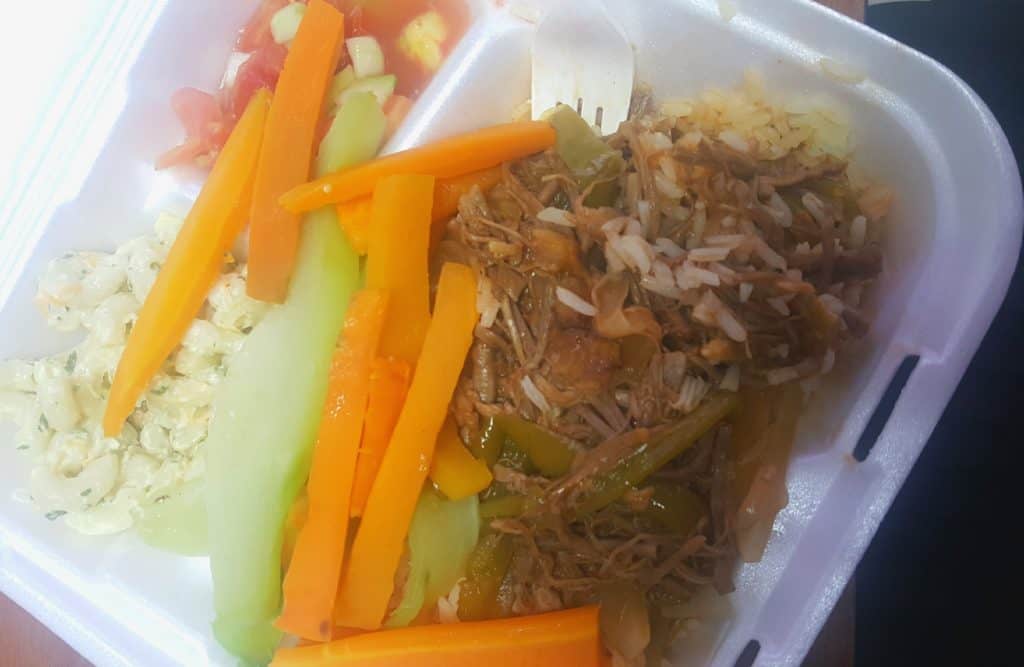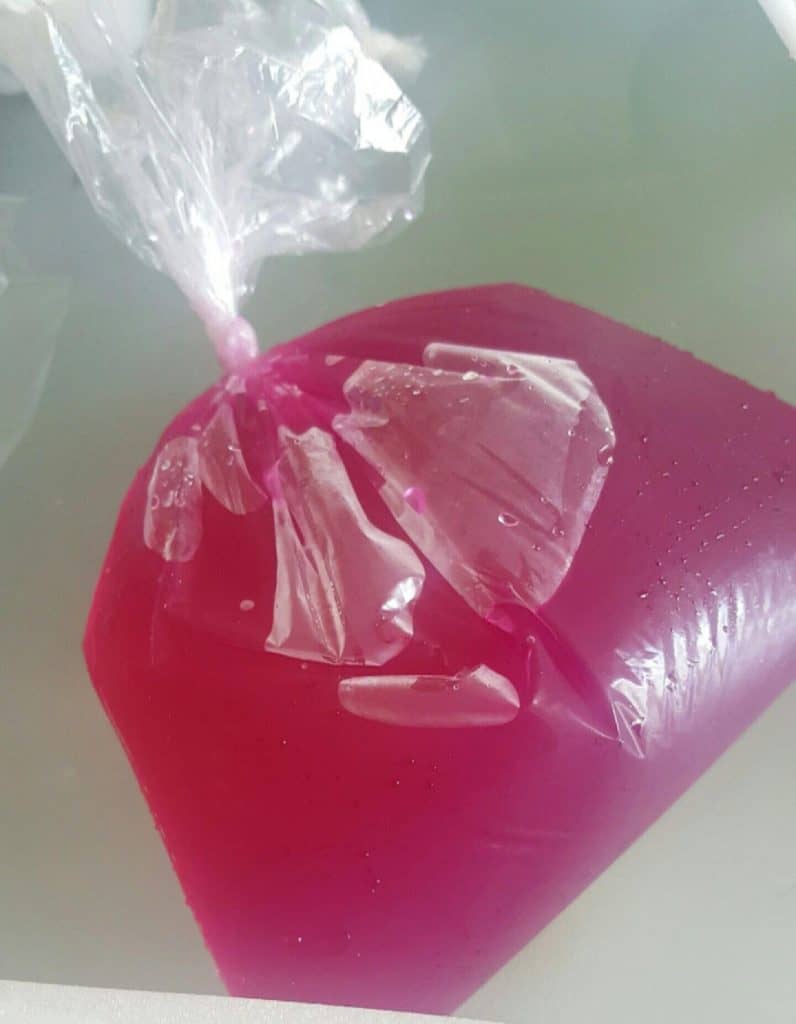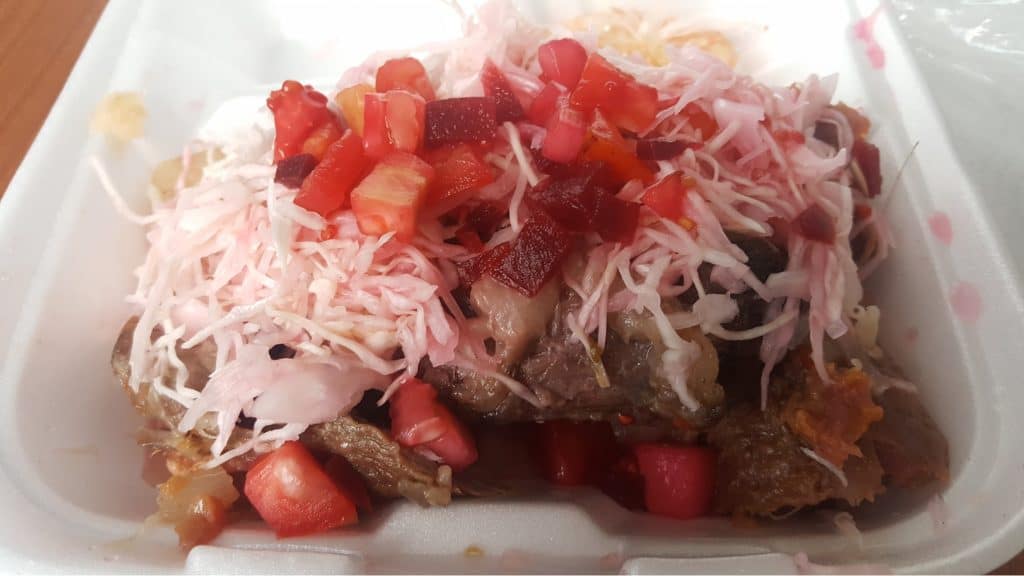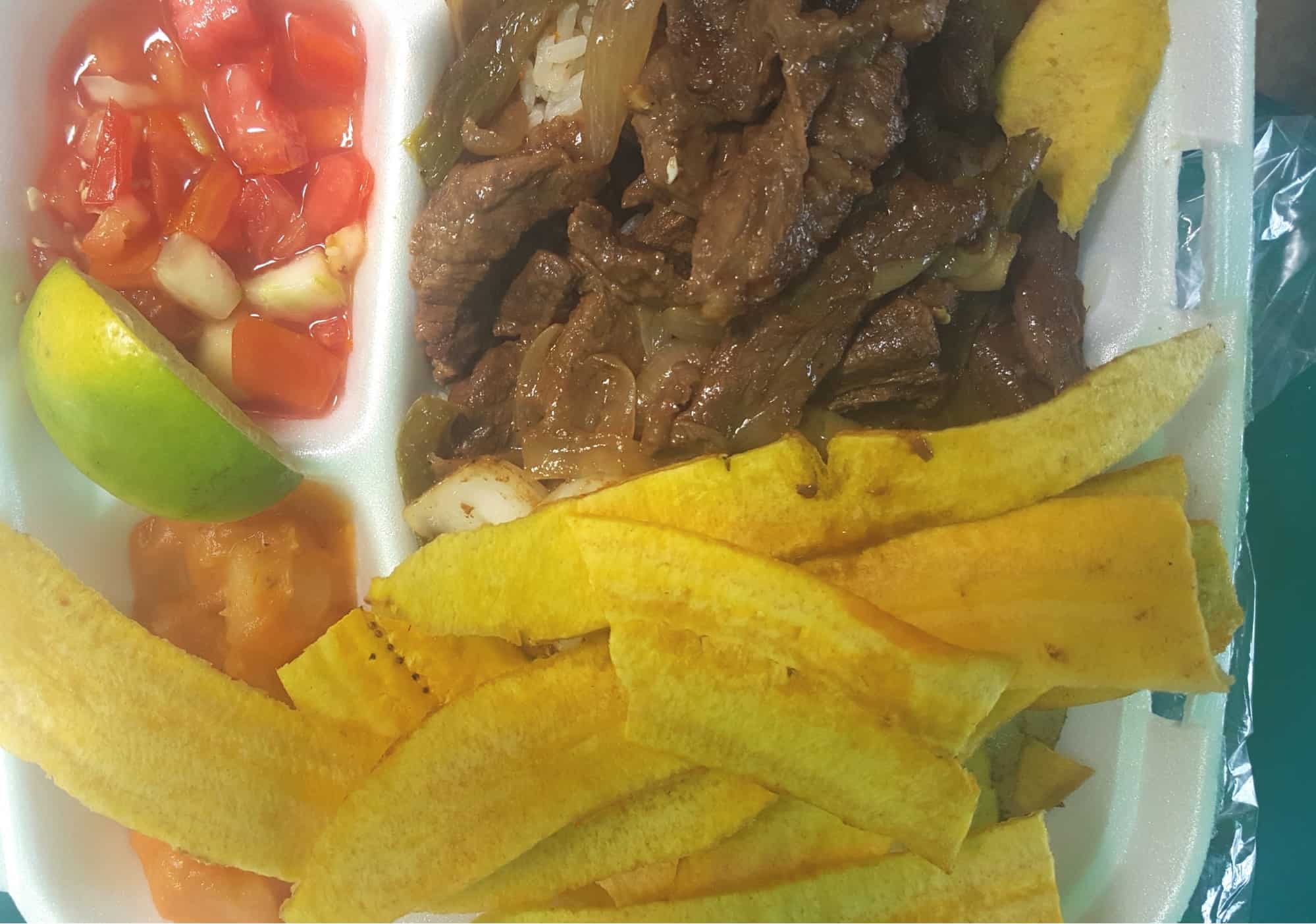I work in a pretty standard office setting in Managua, the capital city of Nicaragua; as in so many offices around the world, we sit at desks all day long, getting up only for coffee, water, bathroom breaks, and lunch. While I’m no stranger to the wisdom of brown-bagging a lunch instead of going out to eat every weekday at noon, after four hours in an air-conditioned office with five more to go after lunch, I’m more than willing to pay a little extra for an excuse to go outside. Luckily, this indulgence doesn’t cost as much here as it would at home, thanks to Nicaragua’s lower cost of living and a little lunch spot half a block away from the office called Papa Gordo’s.
The word “cafeteria” doesn’t exactly inspire confidence in the culinary skill of the people in the kitchen, wearing hairnets and joylessly stirring metal vats of unidentifiable brown slop. I still have flashbacks to school lunch in my elementary school cafeteria, where we carried white Styrofoam trays of cardboard pizza squares, globs of soggy mac ‘n cheese, and soggy milk cartons down a stainless steel track toward the cashier; needless to say, I don’t have great associations with food served institution-style. In plainest terms, Papa Gordo’s is a cafeteria, where office workers in their business-casual attire line up in front of a clear plastic sneeze guard to be served their lunch with maximum speed and minimum fuss, but it deviates from the standard formula in all the ways that matter.
Every day, two efficient but pleasant women at the restaurant start each diner’s transaction by asking whether they want their food to stay or to go, pulling a plain white ceramic plate or a Styrofoam takeout box from the towering stacks behind them based on the answer they get. Because this is Latin America, every meal starts with a heaping scoop of rice, unadorned but for a sprinkling of green pepper slices across the top. The crucial moment of choice comes next: chicken or beef? Roast pork or stewed pork? The fish looks good, but is it better than whatever that roasted meat is? Do I want that because I want it, or because it’s oozing melted cheese and I have trouble saying no to that? Fortunately, I think it’s impossible to choose poorly from the options provided – at least, I haven’t had any regrets yet.

While the rice and meat together form the centerpiece of a lunch at Papa Gordo’s, there are plenty of side dishes that accent the main event. There’s usually some type of pasta salad, served room temperature, in an unidentifiable sauce that is at least partially tomatoes and cream. There are always beans, the most natural accompaniment to rice in this region, and caramelized plantains for the same reason. My favorite finishing touch is the fresh pico de gallo, served in its own little pocket of the Styrofoam takeout box. I’ve grown so used to spooning it over the rest of my food that I will mourn its absence when I go back home and have to suffer through a lunch without it. The fried green plantain chips come in a close second, piled on top of everything else until it’s tricky to close the box while keeping them all contained.
Even on my first day eating there, I could figure out what most of the restaurant’s sides were simply by sight. There is, however, one mystery that endures to this day: the boiled green vegetable, always mixed with carrots, that is the only bland option Papa Gordo’s offers (not coincidentally, also surely its lowest-calorie item). Its tastelessness is not the mystery so much as what, exactly, it is. My usual methods of Googling a few relevant keywords (“Nicaragua green vegetable”) turned up no useful results, so we turned to the lunch ladies themselves. When we finally asked one day, “Cual es esa verdura?” (“What is this vegetable?”), we got a puzzled look in response, followed by a shrug: “Es verdura.” (“It’s vegetable.”) The mystery lives on.

After choosing sides, there are still a few more steps before the lunch ordering process is complete. Depending either on what entrée you’ve chosen or simply based on a whim that day (I still haven’t quite figured out which one it is), the lunch lady holding my container will toss in a tiny, tied-up bag of chilero, a vinegar-based salsa packed with chopped carrots and onions. Then it’s time to choose a drink from a rotating assortment that, so far, has included mandarin, chia, lime, and dragon fruit. Those eating at the restaurant get theirs poured directly into a plastic cup, but those taking food back to the office get handed a plastic sandwich bag pulled from a cooler, knotted at the top. Confession: the first time I bit the corner off mine and tried to pour it into a cup, I spilled limeade all over the table.

On some days, there’s a break in the usual lunch routine. One afternoon, without explanation, the woman at the register handed me my receipt, my credit card, and a lollipop. I felt like a little kid at the bank or a doctor’s appointment, aware that getting a lollipop wasn’t necessarily special treatment if nearly everyone got one too, but still feeling like I must have been very good somehow to deserve a treat. The next week, it happened again; this time, however, the lollipop was heart-shaped. Both times I headed back to the office feeling like that day was a little more special than the others that week.
Even more exciting than lollipop days was the afternoon when one of the lunch ladies, the only one who ever wore a hairnet, gave me the options for the day: they had just run out of chicken, so I had the option of either a breaded pork cutlet or “baho.” Despite my limited Spanish covering quite a range of food-related words, I didn’t know what she meant and asked my housemate (who had just opted for the baho himself) to clarify. He explained that it was similar to vigorón, a regional specialty that I had enjoyed for the first time in Granada just two days ago, and that was enough to sell me on it. My foam box came out already closed, with a few shreds of pickled cabbage poking out the side that the second lunch lady wiped away while I paid. With that hint at the delicious messiness that awaited me within, I walked back to the office with the container firmly sealed and my curiosity piqued.

Experience the Insider community that takes your international lifestyle to the next level. Download your FREE guide
"18 Steps to Implementing Your Plan B" instantly!
Upon lifting the lid, I noticed two things right away about my lunch: the strong citrus smell and the telltale bright pink of beet juice. In addition to the tiny sachet of vinegar salsa tucked into one of the takeout container sections, the baho exuded a definitively sour aroma that promised an invigorating first bite. Beneath the pile of curtido, or pickled cabbage salad, I found a few soft plantains and a pile of braised beef atop a bed of boiled cassava, a potato-like root vegetable known in Spanish as “yuca” (not to be confused with yucca, a totally different plant). All together, the experience was like a good roast dinner, the meat’s richness complemented by the acidity of the lime-soaked cabbage and rounded out by the sweet plantains and bland, but comforting heft of the cassava. It made sense, then, why the woman at the lunch counter had said, “Hay baho” to the man behind me in line with such a conspiratorial, almost-wink in her expression. I felt like I’d been let in on a secret that afternoon, and it was a delicious one.
Like Our Articles?
Then make sure to check out our Bookstore... we have titles packed full of premium offshore intel. Instant Download - Print off for your private library before the government demands we take these down!






